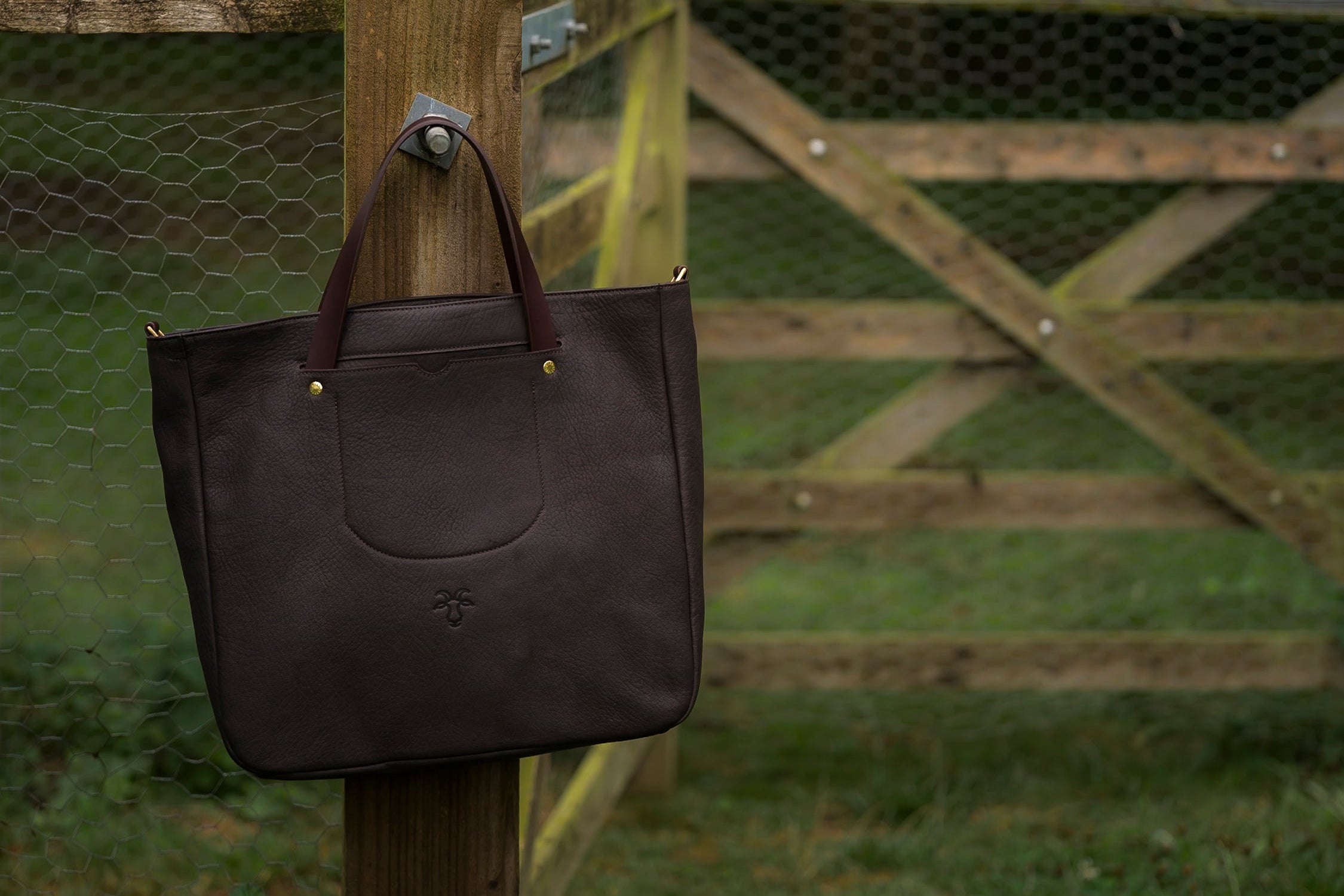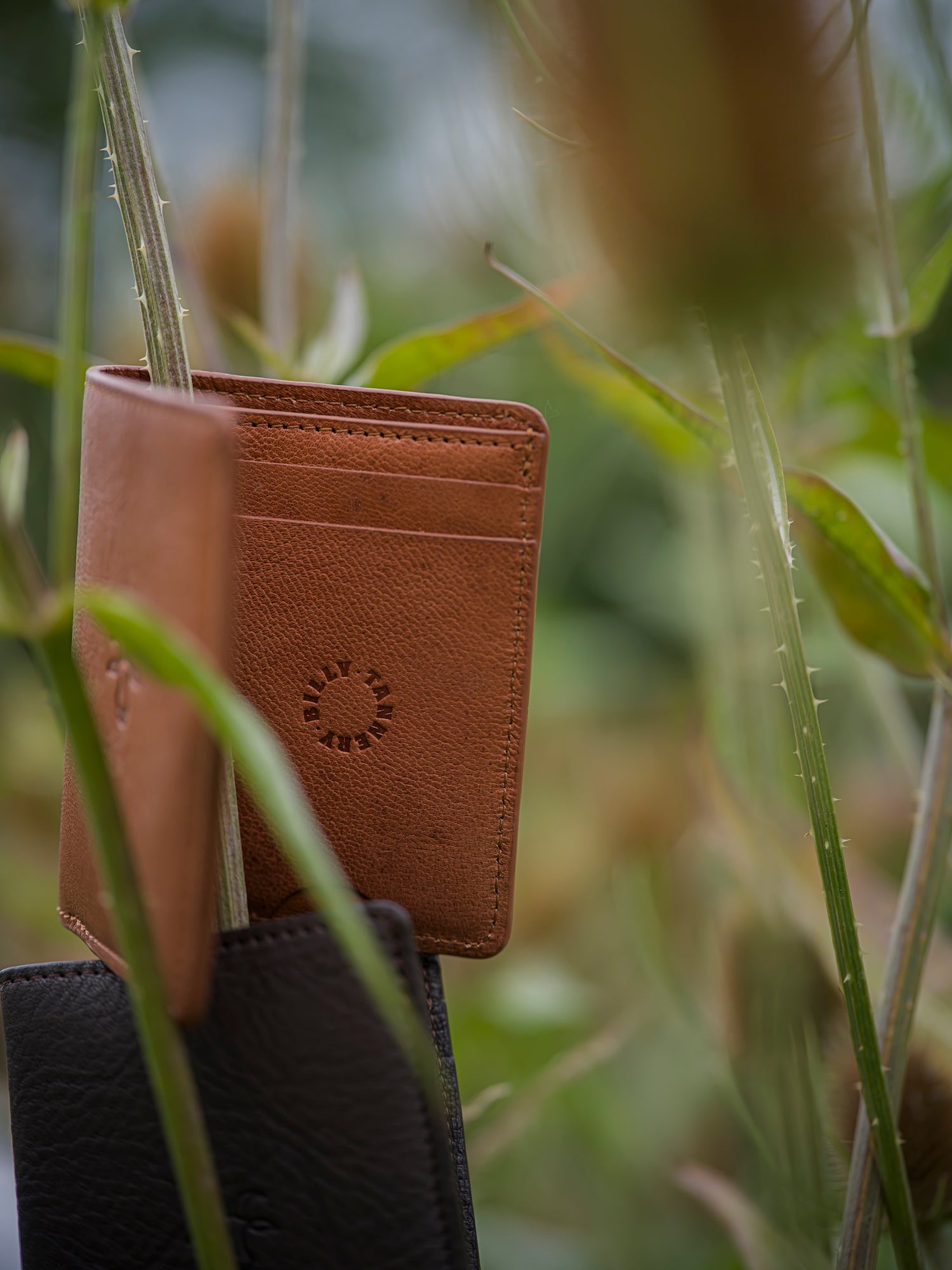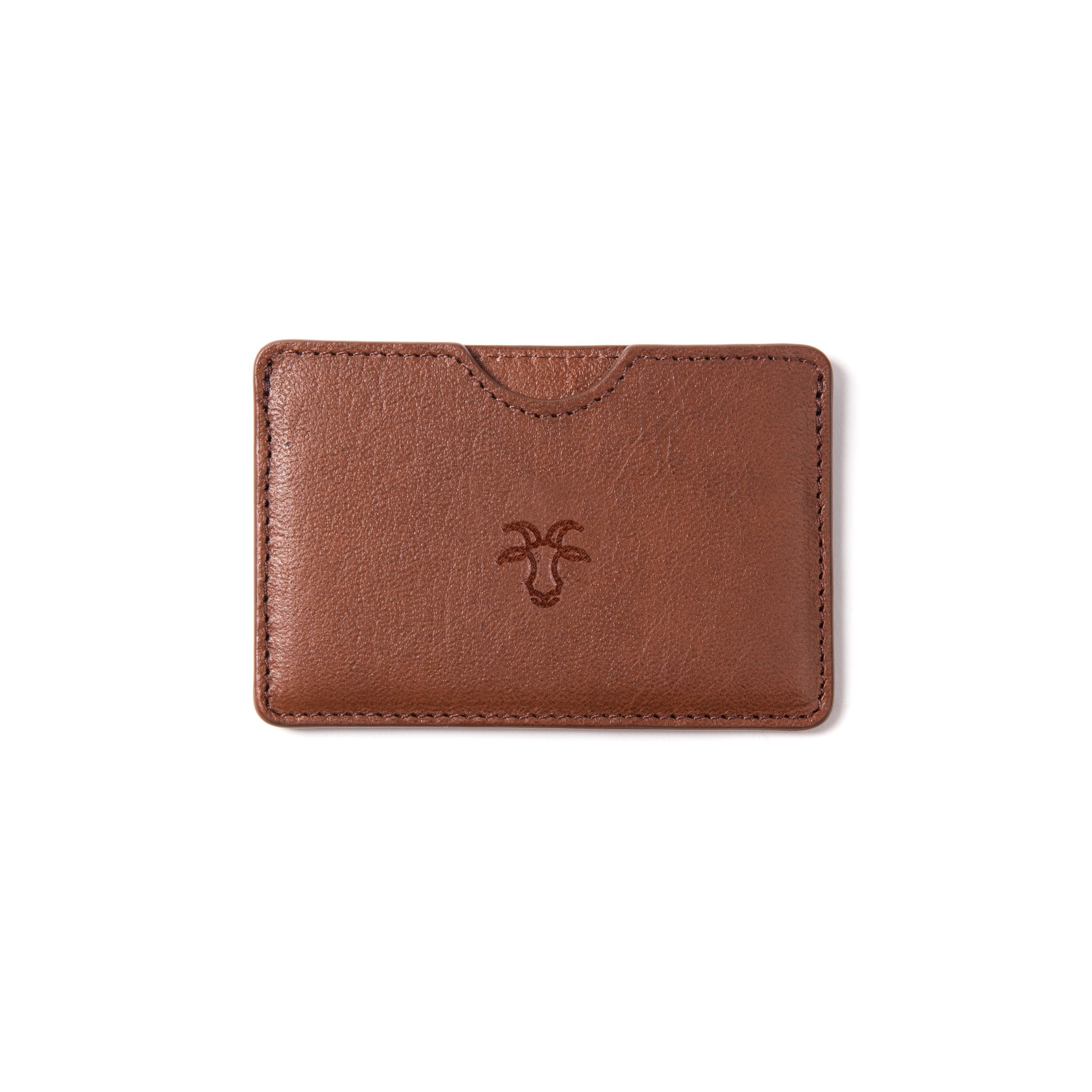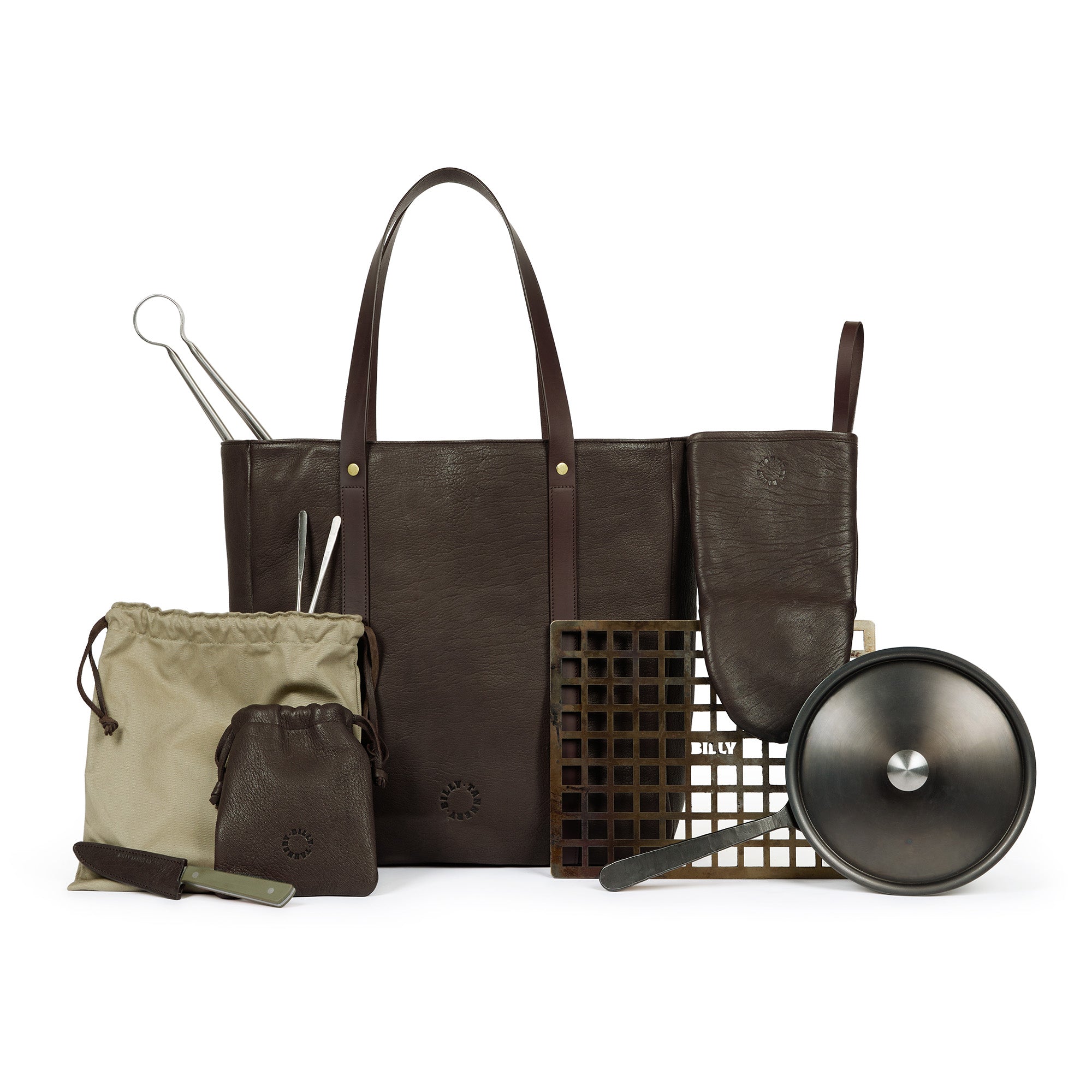Leather tanning is an ancient process that turns animal hides into leather. The most natural method is vegetable tanning, which creates vegetable tanned leather from tannins found in trees to strengthen and colour the material.
Vegetable tanned leather is a beautifully, characterful type of leather. Rightfully so, it has become a popular material due to its durability, unique patina and more environmentally friendly method.
Read on to find out more about the vegetable tanned leather process and the benefits of this traditional method.
What is leather tanning?
Before we can learn more about vegetable tanned leather, first we need to understand how leather is made.
Tanning is the process that converts animal hides or skins into leather. More specifically, it’s the process of using tannins (or tanning agents) to help preserve an animal’s skin, most often a by-product of the meat industry, in order to keep the collagen intact and stop proteins breaking down.
This ancient process is required for all leather that eventually turns into leather goods, but not all tanning processes are the same. It’s worth understanding more about these differences as they can impact the quality of the leather, how sustainable it is and how long it will last for.
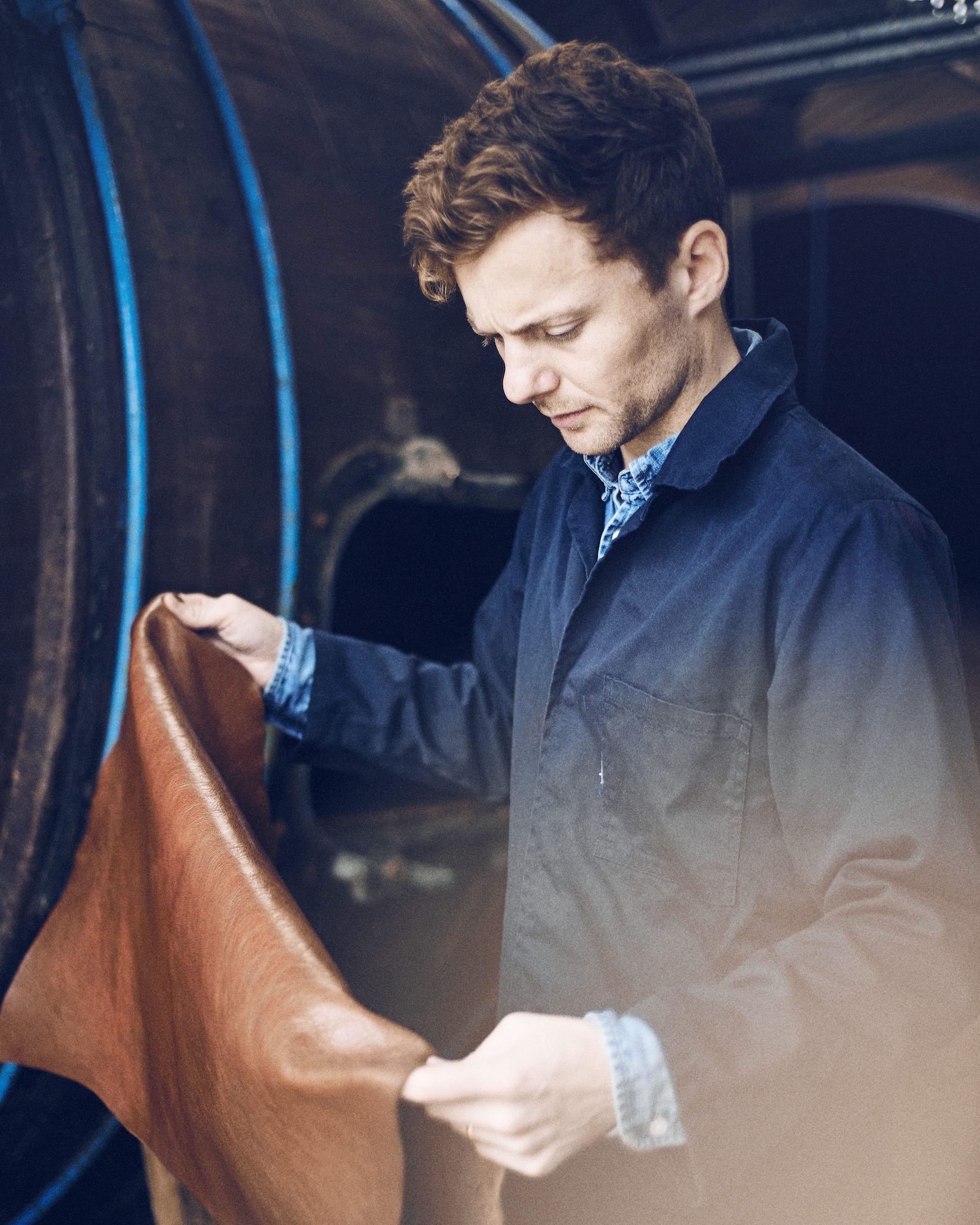
TANNINS
Tannins are organic compounds that occur naturally in plants - you’ll find them in bark, wood, leaves, berries and fruit skins. They act as a deterrent from pests or animals in the wild. There’s also an astringency to them; it’s what causes that slight dryness in a glass of red wine, and it’s why they work really well as a natural binding property for hides and skins to be turned into leather.
Vegetable tannins are used to make vegetable tanned leather. This commonly includes the bark, leaves and roots from trees such as birch, momosa, oak and chestnut. Each give the hide a deep colour and strengthen it for long term use.
The other main method, chrome-tanning, uses synthetic tannins. There are pros and cons to each, but it really depends on the type of product you’re making and its purpose.
WHAT IS VEGETABLE TANNING?
Vegetable tanning refers to the method in which animal hides are turned into leather.
The word tannin comes from the Latin “tannum” meaning oak bark, which is a clue to vegetable tanning being the original method of making leather. With this method, the hides are soaked in a vegetable tannin “liquor” and left for a long period of time – ranging from days to a year.
Vegetable tanned leather is usually a more time-intensive process which is why less than 10% of leather is made this way globally. It’s a practice that dates back thousands of years, and one that requires greater patience. But like all things that take time, the end result is much higher quality.
The vegetable tanning process involves various steps to remove anything that could make the skin go off in the future. This includes removing fat and hair, liming/de-liming and bating which softens the hides. The actual 'tanning' then begins before the hides are treated, stretched and finished. Find out more about how leather is made.
WHAT ARE THE BENEFITS OF VEGETABLE TANNED LEATHER?
There are various advantages of vegetable tanned leather and one of these is the look, feel and smell. Many vegetable tannins impart a beautiful aroma that remains with the leather and, over time, vegetable tanned leather tends to take on a distinctive patina - darkening as it ages and from its specific use.
Vegetable tanning is also a more natural process and is the most environmentally conscious form of leather tanning available. Unlike other methods, vegetable tanning does not use any chemicals or leave toxic residues in the wastewater. This makes it easier for the tannery to treat its wastewater, make use of the biodegradable substances that are leftover, and reduce the overall environmental impact. It’s a process designed to celebrate the unique aspects between leather products, rather than chasing uniformity. This makes it an ideal choice for more personal items such as bags, wallets and shoes.
- Is a natural process that is more sustainable than other methods
- Celebrates the unique aspects of leather including marks and variations
- Creates one of a kind products
- Leather is softer and more durable
- Creates a beautiful aroma
- More of a natural texture
- Results in a distinctive patina that darkens with use
- Is a traditional, celebrated leather making process
There aren't many disadvantages of vegetable tanned leather. Whilst it may be more expensive, its care and time results in superior quality and durability.
IS VEGETABLE TANNED LEATHER GENUINE LEATHER?
Vegetable tanned leather is real leather, however it's much better quality than genuine leather. Genuine leather only refers to leather being real, but it is often a thin, weak material used for cheaper leather goods due to its sanded down nature.
Find out about the different types of leather to learn more.

CHROME-TANNED LEATHER
In comparison, chrome-tanning is a more efficient, industrial process and uses inorganic metal salts (chromium) as a binder, rather than plant extracts. Using this method you can process hide to leather in the space of a day, bringing the costs down significantly.
These chemicals tend to override the natural characteristics of the leather but as a result, chrome-tanning creates a more consistent product for industrial use. The colour tends not to change over time, it’s cheaper to both produce and buy, and that means it’s often easier to source than vegetable-tanned leather. It also results in a softer, more pliable leather than veg-tan so can be advantageous depending on what it’s being used for.
Typically you’ll see chrome-tanned leather used for furniture and car interiors. That said, chrome tanning requires more careful environmental controls. If you choose chrome, pay attention to the tannery and the country of origin as regulations vary hugely - there are horror stories of unsustainable methods used in its production.
How long does veg tan leather last?
If looked after properly, vegetable tanned leather can last for decades. As vegetable tanned leather is free from synthetic coatings and is a light, natural colour it tends to show the unique markings from the animal hide. Its appearance also changes over time, developing a rich patina which we think adds to its charm.
How to look after vegetable tanned leather
It's important to care for vegetable tanned leather to protect its longevity and quality. Leather isn't waterproof, so avoid getting it wet and instead condition it with a specialist Leather Care Kit to make it water resistant.
You can clean vegetable tanned leather by gently wiping the surface with warm water and leaving it to dry away from direct heat or sunlight. Apply some leather cream and condition the leather and buff away excess product to your desired shine.
Find out more about how to clean vegetable tanned leather.
BILLY TANNERY VEGETABLE TANNED LEATHER GOODS
At Billy Tannery we combine traditional vegetable tanning with modern leather technology and make use of a meat by-product that would otherwise go to waste.
Not only does our full-grain goatskin leather develop a beautiful rich patina with age - which means that every Billy Tannery leather good contains a unique point of difference - but we’re focused on a sustainable practice from start to finish.

Our farm-based micro-tannery in the British Midlands means that everything is sourced and produced in the UK to help reduce our carbon footprint. We’ve also worked with a local leather-expert to develop a uniquely sustainable tanning process, which means we’re able to recycle 90% of the water we use.
We use mimosa bark extracts which are easily grown, and make our wastewater on site easy to treat; most is used to irrigate and fertilise nearby fields. Our goal is to create a circular system where we give back positively to the land rather than pollute it.
Finally, we produce all of our leather goods in small batches here in the UK. At Billy Tannery, the focus is always on the details. That’s why we only use vegetable tanning to produce our goatskin leather, to let the distinctiveness of this type of leather truly speak for itself.
Take a look at our range of full grain leather goods.
